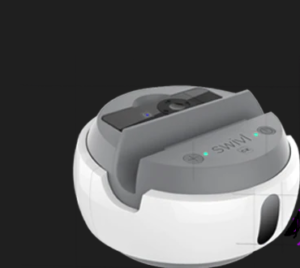Early childhood education programmes around the country each confront their unique challenges. Some people may empathise with the dissatisfaction due to significant employee turnover and an inadequate supply of useful materials.
Swivl is currently being recognised all over the globe as a solution to some significant issues, including the revolutionisation of blended learning, the preparation for any circumstance, and the provision of an in-class environment for virtual students.
Furthermore, Swivl provides the opportunity for observation and introspection. The contact between students and teachers may improve, and professional development can be furthered. Swivl is here to assist you in overcoming these obstacles and any others that may arise in the early childhood schools in which you teach.
Keep reading to learn more about Swivl, where it is going, and its uses.
What Is Swivl?
Swivl is a helpful technology that can record lessons without requiring a camera that takes up a lot of space in the classroom. It comprises a base designed to support a device and various markers that allow monitoring of the speaker and audio to be captured throughout a classroom. This enables the camera to follow whoever is speaking in the room. Because of this, it is particularly handy for recording sessions consisting of questions and answers and discussions.
In addition, to set up Swivl, you will need to utilise a mobile device and download the accompanying software, which is offered for iOS and Android. Swivl is a robotic tool that allows educators to effortlessly record, evaluate, and distribute educational films in a cost-effective and efficient manner.
It gives educators complete control over the recording of lectures, makes it possible to cater to the unique needs of each student’s learning style, and guarantees that no student will ever miss a minute of teaching.
Where Is Swivl Going?
Swivl has gained an incredible level of loyalty and support from its users. Swivl robot camera are now being used in various countries and are supported by many businesses. People are developing novel and inventive methods to utilise them, like recording lectures and presentations, facilitating remote learning, educating teachers, and working together.

Uses Of Swivl
The Swivl solution can potentially improve educational experiences for students and teachers alike. Some uses are:
- Content contributed by students: Allow students to take responsibility for their learning by recording conversations, demonstrations, oral readings, or presentations. Then, instruct students to view and reflect on their films or even “post” them in a blog or an e-portfolio.
- Evaluation and observation: Swivl may be used to record teacher-led teaching and share it with administrators to use in assessments or discussing best practices.
- Teacher reflections: Capturing teaching allows instructors to reflect on and develop their approach. Swivl Cloud’s commenting features enable administrators and mentors to provide input.
- Station-based learning: Make a video tutorial or mini-lesson for learners to utilise in small communities or stations. Allow pupils to utilise Swivl to record their work in small groups.
- Flipped leadership and teaching: Swivl may be used to film mini-lessons, educational videos, and newsletters for students, families, and community members.
Using Swivl in the Flipped Classroom
Swivl is a complete learning platform with a motion-tracking robot, mobile app, and cloud hosting service, allowing anybody to shoot and share films from anywhere. Easily make meaningful multimedia movies that boost the learning experience using current technology, such as smartphones and tablets.
Additionally, users may then share this learning material on Swivl’s private and safe video hosting service, in which they have complete control over their content. Swivl makes flipping classes so simple because instructors never have to modify how they teach. They may record lectures during class to provide extra learning information, rapidly capture them outside class to give as homework, or even begin recording lessons today to establish a library of content for future flipped classrooms, distance classes, or hybrid courses.
Swivl allows instructors to lecture and collaborate on whiteboards from a close enough distance that the board’s information is caught on video. Alternatively, instructors may submit slides before recording a presentation to integrate them into a video.
Both alternatives provide entertaining and thorough learning material for pupils, which promotes understanding and retention. Once uploaded to Swivl Cloud, you may trim video endings and remove them to make a 60-minute lecture more palatable for students.
Furthermore, when videos are shared on Swivl Cloud, teachers can view statistics and analytics on which students have viewed them and to what extent, receive timestamped comments, and even send reminders to students to watch them ahead of class.
Conclusion
Swivl has improved coaches’ capacity to deliver comments based on recorded and live evaluations. Individuals have been granted access to the learning environment to give instructors more excellent in-the-moment help.
Individuals are thrilled to see how educators and coaches are utilising Swivl to generate development possibilities in their classrooms; today, they are looking forwards to making significant progress towards delivering a dynamic virtual education model for each school.
If you are new to Swivl, we hope you will find motivation by looking at how other institutions are using technologies to build a more accessible hybrid environment.
